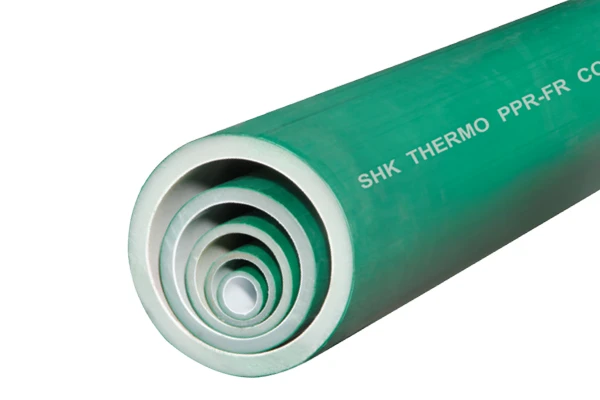PPR ISO 15874, PVC, and PEX pipes are commonly used in plumbing and construction, each with distinct features, advantages, and specific applications. Understanding the differences among these three types can help in selecting the right material for various plumbing needs.
1. PPR Pipes (Polypropylene Random Copolymer Pipes)
Material Properties:
PPR pipes are made from polypropylene, a thermoplastic polymer known for its durability and resistance to chemicals. These pipes are typically used for hot and cold water systems.
Advantages:
- Heat Resistance: PPR pipes can withstand high temperatures (up to 95°C), making them ideal for hot water supply.
- Durability: These pipes have a long lifespan, often exceeding 50 years, due to their corrosion resistance.
- Non-Toxic: Safe for drinking water, as they do not release harmful chemicals into the water.
- Easy Installation: PPR pipes use heat fusion technology, creating strong, leak-free joints.
Disadvantages:
- Cost: They tend to be more expensive than PVC pipes.
- Installation Equipment: Requires specialized tools for heat fusion.
Common Uses:
- Hot and cold water supply in residential and commercial buildings.
- Heating systems and industrial water applications.
2. PVC Pipes (Polyvinyl Chloride Pipes)
Material Properties:
PVC pipes are made from polyvinyl chloride, a lightweight and rigid plastic material. They are widely used in both residential and industrial plumbing.
Advantages:
- Cost-Effective: PVC pipes are relatively inexpensive and widely available.
- Corrosion-Resistant: They resist corrosion, ensuring a long life in various environments.
- Lightweight: Easy to transport and install due to their low weight.
- Low Maintenance: Minimal upkeep is required, making them a popular choice for drainage systems.
Disadvantages:
- Temperature Sensitivity: PVC pipes are not suitable for high-temperature applications as they can deform or soften.
- Chemical Leaching: Not recommended for hot water systems, as they may release chemicals when exposed to high temperatures.
- Brittleness: PVC can become brittle in extreme cold.
Common Uses:
- Drainage and sewer systems.
- Cold water supply.
- Vent piping.

3. PEX Pipes (Cross-linked Polyethylene Pipes)
Material Properties:
PEX pipes are made from cross-linked polyethylene, a flexible plastic material that is becoming increasingly popular in modern plumbing systems.
Advantages:
- Flexibility: PEX pipes can bend easily, allowing for simple installation, especially in tight spaces.
- Temperature Tolerance: They can handle both hot and cold water applications, making them versatile for residential plumbing.
- Durability: Highly resistant to scale and chlorine, PEX pipes are durable and have a long lifespan.
- Easy Installation: No need for soldering or gluing; they use crimping or clamping tools, making the process simpler.
Disadvantages:
- UV Sensitivity: PEX pipes degrade when exposed to sunlight, so they are unsuitable for outdoor applications.
- Cost: More expensive than PVC but less costly than copper.
- Limited Recyclability: PEX is not as easily recyclable as PVC.
Common Uses:
- Hot and cold water distribution in homes.
- Radiant floor heating systems.
- Re-piping and retrofitting older plumbing systems.
Comparison Table
| Feature | PPR Pipes | PVC Pipes | PEX Pipes |
|---|---|---|---|
| Temperature Resistance | Excellent (Hot and Cold) | Poor (Cold Only) | Good (Hot and Cold) |
| Durability | High | Moderate | High |
| Installation | Requires heat fusion | Easy, glue joints | Easy, crimping/clamping |
| Cost | Higher | Low | Moderate |
| Flexibility | Rigid | Rigid | Flexible |
| Common Uses | Hot/cold water supply | Drainage, cold water | Hot/cold water, heating |
| UV Resistance | Good | Good | Poor |
Conclusion
Each type of pipe—PPR, PVC, and PEX—has specific benefits that make it suitable for different applications. PPR pipes are excellent for hot water systems but come at a higher cost. PVC pipes are affordable and widely used for drainage and cold water supply, though they are not suitable for high temperatures. PEX pipes offer flexibility and ease of installation, making them a preferred choice for modern plumbing systems, particularly in residential settings.
The choice between these three depends on factors such as cost, temperature requirements, installation complexity, and the specific needs of the project.


















